Kristen Elise's Blog, page 2
August 18, 2015
The Enigma of Cleopatra
1. Cleopatra was not Egyptian.While Cleopatra was born in Egypt, she traced her family origins to Macedonian Greece and Ptolemy I Soter, one of Alexander the Great’s generals. Ptolemy took the reigns of Egypt after Alexander’s death in 323 B.C., and he launched a dynasty of Greek-speaking rulers that lasted for nearly three centuries. Despite not being ethnically Egyptian, Cleopatra embraced many of her country’s ancient customs and was the first member of the Ptolemaic line to learn the Egyptian language.Read the rest at www.history.com
August 14, 2015
Lighthouse of Alexandria to be Rebuilt!
http://archaeology.org/news/3265-150505-alexandria-lighthouse-replica
This blog post explores a non-fictional theme or locale that is incorporated in The Vesuvius Isotope, the first Katrina Stone novel. Buy The Vesuvius Isotope in print
 or ebook
or ebook .
.From the ancient ruins beneath Mount Vesuvius, a two-thousand-year-old document has emerged. It is the only text ever attributed to the ambitious, inquisitive, and cryptic last pharaoh of Egypt...
When her Nobel laureate husband is murdered, biologist Katrina Stone can no longer ignore the secrecy that has increasingly pervaded his recent behavior. Her search for answers leads to a two-thousand-year-old medical mystery and the life of one of history’s most enigmatic women. Following the trail forged by her late husband, Katrina must separate truth from legend as she chases medicine from ancient Italy and Egypt to a clandestine modern-day war. Her quest will reveal a legacy of greed and murder and resurrect an ancient plague into the twenty-first century.
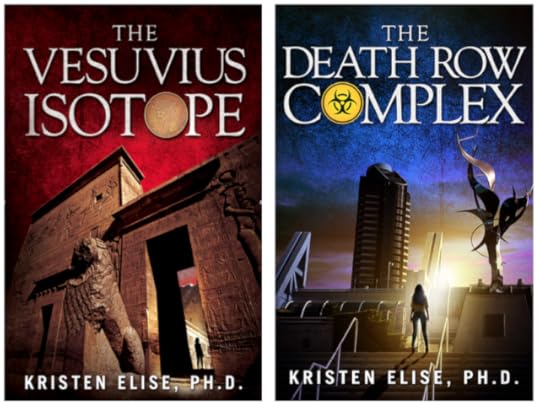
Kristen Elise, Ph.D. is a drug discovery biologist and the author of The Vesuvius Isotope and The Death Row Complex. She lives in San Diego, California, with her husband, stepson, and three canine children.
July 22, 2015
The Best Secret Passageway You've Never Sailed Through
When was your last underground archeological tour that entailed ziplining and sailing?
It's well known today that Il Passetto of Rome was constructed as a secret passageway for Popes. But how do you escape in times of siege if you're the king?
 In Naples lies an underground passageway that stretches from the Royal Palace all the way to... huh?
In Naples lies an underground passageway that stretches from the Royal Palace all the way to... huh?It ends in a parking lot.
But let's back up.
The Tunnel Borbonico was built by Bourbon King "The Bomb" Ferdinand II--son of "Big Nose" Ferdinand I, and equally unpopular among his subjects. The younger king ordered the tunnel constructed as an escape route in times of revolution, which pretty much meant Ferdinand's entire reign.
 The passageway was planned to extend into Piazza Vittoria, which housed a military barracks. But it was never quite finished.
The passageway was planned to extend into Piazza Vittoria, which housed a military barracks. But it was never quite finished.Today, the main entrance to Il Tunnel Borbonico can be accessed in Piazza Plebiscito, the large, central piazza of Naples in which the Royal Palace resides. A giant parking structure sits on top at the other end of the tunnel, but one can access the tunnel from within the parking lot.
Visiting Il Tunnel Borbonico is not your average walking tour through an underground chamber. While the "Standard Tour" is what one might expect--a walk through the tunnels, exploring the artifacts--the adventurous might want to try the "Adventure Tour." This one leads through still-flooded passageways and entails a raft ride beneath the city. And for those who would rather be in the sky beneath Naples (yes, you read that right), don your lighted helmet and follow the "Speleo Tour", where you get to zipline up a cistern.
For more information, visit the Tunnel Borbonico website.
This blog post explores a non-fictional theme or locale that is incorporated in the third Katrina Stone novel, as yet untitled, by Kristen Elise. Buy The Vesuvius Isotope, the first Katrina Stone novel, in print
 or ebook
or ebook .
.From the ancient ruins beneath Mount Vesuvius, a two-thousand-year-old document has emerged. It is the only text ever attributed to the ambitious, inquisitive, and cryptic last pharaoh of Egypt...
When her Nobel laureate husband is murdered, biologist Katrina Stone can no longer ignore the secrecy that has increasingly pervaded his recent behavior. Her search for answers leads to a two-thousand-year-old medical mystery and the life of one of history’s most enigmatic women. Following the trail forged by her late husband, Katrina must separate truth from legend as she chases medicine from ancient Italy and Egypt to a clandestine modern-day war. Her quest will reveal a legacy of greed and murder and resurrect an ancient plague into the twenty-first century.

Kristen Elise, Ph.D. is a drug discovery biologist and the author of The Vesuvius Isotope. She lives in San Diego, California, with her husband, stepson, and three canine children.
July 15, 2015
The Buried Books of Herculaneum Part 3
 Philip V and Elisabetta
When the booty was gone, they filled in the holes, and with no interests whatsoever in art, no such field as archeology and no apparent concept of historical preservation, there were no real records of the find. The story might have stopped right there, had it not been for a succession of women as ambitious as Cleopatra herself...
Philip V and Elisabetta
When the booty was gone, they filled in the holes, and with no interests whatsoever in art, no such field as archeology and no apparent concept of historical preservation, there were no real records of the find. The story might have stopped right there, had it not been for a succession of women as ambitious as Cleopatra herself...
Part 2 of this series begins the story of the excavations of Herculaneum, as we seek to unravel the answer to the mystery: Why was the Villa dei Papyri never fully excavated?
Here we continue this story.
*****
Twenty-five years after d’Elboeuf abandoned the site, two factors converged to revive the excavations of Herculaneum. The first was the ascension of a new reigning king of Naples – or rather, the true monarch - his mother.
In 1734, Naples fell under control of the “Spanish” royal dynasty controlling the Kingdom of Two Sicilies, of which neither king nor queen was actually Spanish or Sicilian. Philip V was the French grandson of Louis XIV and was raised at the court of Versailles with aspirations of the French crown. Instead, he was granted the lesser Spanish one. Throughout his nominal reign, Philip suffered from a severe depression that left him categorically incapacitated most of the time. And so his kingdom was managed by the queen.
Philip’s wife Queen Elisabetta was an Italian princess descended from the Medici dukes of Florence and the Farnese dukes of Lombardy. On the day she rode into Madrid to marry Philip, she was greeted by Philip’s official mistress, whom Elisabetta ordered arrested and deported on the spot. This set the tone for their marriage.
Elisabetta instated the first born son from her marriage with Philip upon the throne of Naples as the new King of Campania. The prince was eighteen-year-old Charles. While Charles nominally ruled the kingdom, it was his mother, Italian-born Medici Queen Elisabetta who became determined to convert the run-down, poverty- and disease-infested cesspool that was Naples into “the Florence of the South.” And this she did, funding her ambitious endeavors by taxing the Catholic Church on its land. As the Church was the largest landholder in Campania, tax revenues tripled.
 San Carlo Opera House, Naples, 1737Elisabetta used the newly acquired funds to build three new palaces, a royal opera house, a prison, hospices, a cemetery and a number of factories. The palaces were intended for museums as well as for royal residences; she also set the course to transfer a vast number of pieces from the priceless Farnese collection into Naples.
San Carlo Opera House, Naples, 1737Elisabetta used the newly acquired funds to build three new palaces, a royal opera house, a prison, hospices, a cemetery and a number of factories. The palaces were intended for museums as well as for royal residences; she also set the course to transfer a vast number of pieces from the priceless Farnese collection into Naples.At the same time, she ordered that the neglected Herculaneum excavations be resumed in hopes of finding further additions.
Under the official direction of Charles and the unofficial direction of Elisabetta, the vast cities of Herculaneum and the recently discovered Pompeii were systematically plundered. The efforts were led by a Spanish artillery engineer, Captain Rocque Joachim Alcubierre, whose sole mission was to find everything of monetary value and pluck it from the earth. As he exhausted one source of the buried treasure, he would delve unthinkingly into the next, backfilling each prior section with dirt from the new one.
It was under Alcubierre that the Villa dei Papiri was discovered.
Raimondo di Sangro, Prince of Sansevero and friend of King Charles, became the first to attempt opening the papyrus scrolls as they emerged from within the villa. A self-proclaimed "gifted" and "extraordinary" alchemist, di Sangro used mercury in an effort to soften the charred, brittle papyrus. The mercury dissolved the scrolls, and many of them were lost.
To be continued in part 4, May 9...
This blog post explores a non-fictional theme or locale that is incorporated in The Vesuvius Isotope, a new novel by Kristen Elise. Buy The Vesuvius Isotope on Amazon
 .
.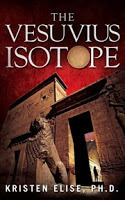
When her Nobel laureate husband is murdered, biologist Katrina Stone can no longer ignore the secrecy that increasingly pervaded his behavior in recent weeks. Her search for answers leads to a two-thousand-year-old medical mystery and the esoteric life of one of history’s most enigmatic women. Following the trail forged by her late husband, Katrina must separate truth from legend as she chases medicine from ancient Italy and Egypt to a clandestine modern-day war. Her quest will reveal a legacy of greed and murder and resurrect an ancient plague, introducing it into the twenty-first century.
Kristen Elise, Ph.D. is a drug discovery biologist and the author of The Vesuvius Isotope. She lives in San Diego, California, with her husband, stepson, and three canine children.
June 27, 2015
The Death Row Complex - A Thriller Twelve Years in the Making
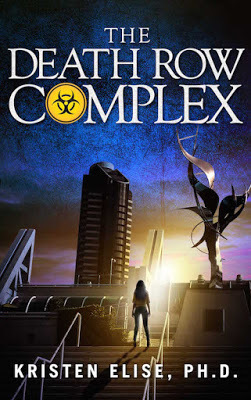 Tis a happy day for me, as The Death Row Complex has finally arrived! At long last, you may download the Kindle version (discounted this month in honor of the launch!), order a paperback from Amazon, or purchase a signed copy from me. Finally.
Tis a happy day for me, as The Death Row Complex has finally arrived! At long last, you may download the Kindle version (discounted this month in honor of the launch!), order a paperback from Amazon, or purchase a signed copy from me. Finally.Now, I'm sure that the launch of a new book doesn't seem like a big deal to most of you. But it's a big deal for me, because I started writing this book twelve years ago. The Death Row Complex is older than Facebook. Let that sink in for a minute.
There's a story about the genesis of this book, so I suppose now is as good a time as any to tell it...
Twelve years ago, I was a postdoctoral fellow, which is scienctific jargon for overeducated indentured servant. I was working on finding a molecule that could block an anthrax infection (because what's the best thing to give a disgruntled scientist? A biological weapon, of course!) While doing this work, I stumbled upon a molecule that activated anthrax instead of blocking it. This was not too long after 9/11 and the Amerithrax incident, and it made me ponder the possibilities of what could happen if the dangerous technologies of the world fell into the wrong hands. And it also made me realize that that's exactly where those technologies already are.
Right around that same time, twelve years ago, my friend Sara McBride was writing a story. She dared me to do the same. That was reason enough for me.
But then something happened... I started writing, and I really, really liked it! I liked it enough, in fact, that I became rather obsessed with the creation of this story. So much so that I stopped wanting to do anything else with my free time, for a while.
But then something else happened. Writing got hard. I discovered this new phenomenon called "writer's block," which I was pretty sure nobody else had ever experienced prior to myself. So I put the book down... sometimes for days, sometimes for weeks... and worked on it on and off for the next five years.
Then I got the idea for The Vesuvius Isotope, and I decided I wanted to publish Vesuvius first. I wanted Death Row to be released later as a prequel, and so, poor Death Row had to wait, again.
So here, at long last, is my first second thriller, The Death Row Complex. Please feel free to read an excerpt, or purchase the novel at one of the links above. And if you're so inclined, please feel free to leave a review on Amazon when you're done. I'd love it if you did.
There is a third Katrina Stone novel in the works at this time. It is a sequel to The Vesuvius Isotope, and it returns to the historical thriller theme. I promise not to take twelve years to publish it.
June 25, 2015
The Death Row Complex is Here!

An anonymous warning is sent to the White House, and a genetically engineered biological weapon is released in a California prison. The unpublished data of biologist Katrina Stone may hold the key to harnessing the lethal bacterium—and to its creation within the desperate world from which biotechnology is born.
At long last, the prequel to The Vesuvius Isotope is a reality.
In honor of the official launch, I'm:
1) Hosting a giveaway here on Goodreads... I'll be giving away TEN copies, WORLD WIDE. So if you liked The Vesuvius Isotope, please, sign up!
2) Discounting the Kindle ebook to $0.99 for the entire month of July... so if you have a Kindle or app thereof, please, pick one up!
3) Having a massive launch party on June 27, so if you're in San Diego, please, show up!
Pick up The Death Row Complex on Amazon at mybook.to/TheDeathRowComplex
Pick up the first Katrina Stone novel, The Vesuvius Isotope, at mybook.to/TheVesuviusIsotope
And if you'd like to know more about my books without having to go through Goodreads, please visit my author page at www.kristenelisephd.com and sign up on my mailing list!
The Death Row Complex
June 24, 2015
Interview on Crimefiction.fm: Katrina Stone, San Diego, and Being a Scientist/Author
And, if you're an author, do yourself and your career a huge favor and check out The Author Biz podcast, another podcast run by Steve. In this one, he interviews the biggest and most successful players in the book business, who share their secrets for how they came to be that way.
June 15, 2015
The Buried Books of Herculaneum Part 2
 "The Villa of the Papyri is unfinished business. In consideration of the immense income from
"The Villa of the Papyri is unfinished business. In consideration of the immense income from Vesuvian sites, excavators have considerable margin of choice. Their priorities could extend to completion of the excavation of the Villa of the Papyri, halted largely due to piranha-like demands for payment for expropropriated lands."
- Judith Harris, Pompeii Awakened
In Part I of the Buried Books of Herculaneum mystery, we presented the following question: Why was the Villa dei Papyri never fully excavated? To answer this mystery, we must travel back in time to the year 1709: the year the Villa dei Papyri was rediscovered after nearly two thousand years beneath the ash.
In 1709, Naples and surrounding regions were under Austrian rule. Like so many of the world’s most amazing discoveries, the lost city of Herculaneum was rediscovered by accident. While digging a well, a feat accomplished in 1709 by leading a heavily yoked ox in a circle, a farmer began unearthing marble.
The farmer began selling the fragments, and one of his earliest prospective customers was Emanuel d’Elboeuf, the French prince commanding the Austrian cavalry. Eager to complete his own summer residence, the task that had brought him to shop for marble in the first place, d’Elboeuf confiscated the poor farmer’s well on behalf of the Austrian government. He began digging in earnest, and three female statues were unearthed. They were quickly followed by a statue of Cleopatra. The statues were claimed as property of the Austrian government and placed in the king’s garden in Vienna.
D’Elboeuf and his workers pillaged the building he had drilled into until it was stripped clean. When the booty was gone, they filled in the holes, and with no interests whatsoever in art, no such field as archeology, and no apparent concept of historical preservation, there were no real records of the find. The story might have stopped right there, had it not been for a succession of women as ambitious as Cleopatra herself.
To be continued in Part 3 of The Buried Books of Herculaneum. Look for it July 15.
This blog post explores a non-fictional theme or locale that is incorporated in The Vesuvius Isotope, a novel by Kristen Elise. Buy The Vesuvius Isotope on Amazon.

From the ancient ruins beneath Mount Vesuvius, a two-thousand-year-old document has emerged. It is the only text ever attributed to the ambitious, inquisitive, and cryptic last pharaoh of Egypt...
When her Nobel laureate husband is murdered, biologist Katrina Stone can no longer ignore the secrecy that increasingly crept into his recent behavior. Her search for answers leads to a two-thousand-year-old medical mystery and the intriguing life of one of history’s most enigmatic women. Following the trail forged by her late husband, Katrina must separate truth from legend as she chases a scientific breakthrough from ancient Italy and Egypt to a clandestine modern-day war. Her quest will reveal a legacy of greed and murder and resurrect an ancient plague into the twenty-first century.
Kristen Elise, Ph.D. is a drug discovery biologist and the author of best-selling historical thriller The Vesuvius Isotope. She lives in San Diego, California, with her husband, stepson, and three canine children.
May 30, 2015
Anthrax in the Mail, AGAIN!
I have just a few things to say about this. First of all, I swear, it's not a publicity stunt on my part, although it is eerie how well-timed this is with the imminent launch of The Death Row Complex, which deals directly with this subject. For the record, I haven't had access to anthrax components in years, and I never had access to the live bug.
Second: I can't believe the nerve of the Army and the CDC as they look the public in the eye and try to say that there was never any danger. To be clear: this is not the fault of Fed Ex. It's the fault of the researchers who should have known better. Yes, shipments of hazardous materials, including infectious materials, happens routinely. Yes, there are regulations in place to ensure safety--or at least to maximize the probability of safety. But to accidentally ship a batch of live anthrax that was improperly irradiated? WHOOPS. Big whoops. I hope someone was fired.
Third: Yes, this is different from the Amerithrax mailings. Those were deliberate. The perpetrator of that particular crime (I'm still not convinced it was Bruce Ivins) wanted to make people die. So he put live spores in the envelope with no secondary containment. In contrast, official shipments of infectious materials from one biomedical researcher to another is done in closed containers with the appropriate secondary containment. So it should be safe.
HOWEVER: The failure to properly irradiate a sample that was supposed to have been dead is an indication of a serious lack of attention to detail on the part of someone in the lab. That person shouldn't be there. His supervisor shouldn't be there either, if he isn't more in tune with what's going on in his laboratory. This is worse than malice; it's just stupidity.
Why does this matter? One: because there could still be live infectious material on the outside of the secondary container. It could be the wrong bug altogether. It could be shipped to the wrong place. And so forth. In short, if someone in a live anthrax lab is asleep at the wheel, we can't be confident that he or she only screws up in a way that isn't a threat to the public. Two: If this kind of stupidity is allowed to slip through the cracks, then who is to say that the malice won't also? All it takes is one disgruntled researcher to "accidentally" forget to tighten the cap on the vial. And then we've got issues.
For a glimpse of what could happen, check out The Death Row Complex when it's released on July 13. And ... if you work with live anthrax, please, pay attention.
Anthrax is one of only six microorganisms classified by the CDC as Category A (High Priority) biological weapons. For more information about the bug, here's a link to their bioterrorism page, a link to their anthrax page, and a link to the specific Category A agents.
May 15, 2015
The Death Row Complex Cover Reveal
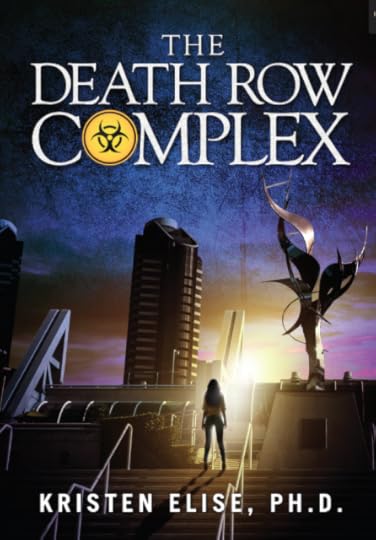 Here it is! This is the cover art for The Death Row Complex, which I'm still foolishly optimistic enough to think we might be able to launch on June 6. This might be quite foolish. But it will certainly be available shortly thereafter, if not on that date.
Here it is! This is the cover art for The Death Row Complex, which I'm still foolishly optimistic enough to think we might be able to launch on June 6. This might be quite foolish. But it will certainly be available shortly thereafter, if not on that date.Those of you who live in San Diego might recognize the cover image. I did, however, modify the sculpture just slightly to make it a DNA double helix.
If you've read the historical thriller The Vesuvius Isotope, you'll notice a trend between the cover art for the two novels. In both, protagonist Katrina Stone is on a quest for a medicine that can divert disaster. However, while the cover for The Vesuvius Isotope depicts the ancient world, that for The Death Row Complex depicts the modern one. Death Row is the prequel, taking place eight years before the events in Vesuvius. A sequel, which returns to the theme of a modern-day quest for an ancient medicine, is in the works.
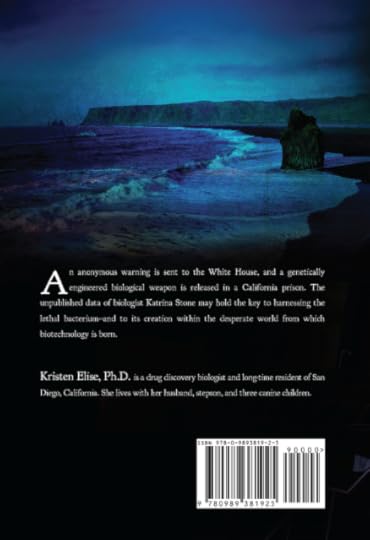 The Death Row Complex will be available for pre-order in the very near future. Purchase The Vesuvius Isotope on Amazon or get a signed copy here.
The Death Row Complex will be available for pre-order in the very near future. Purchase The Vesuvius Isotope on Amazon or get a signed copy here.


